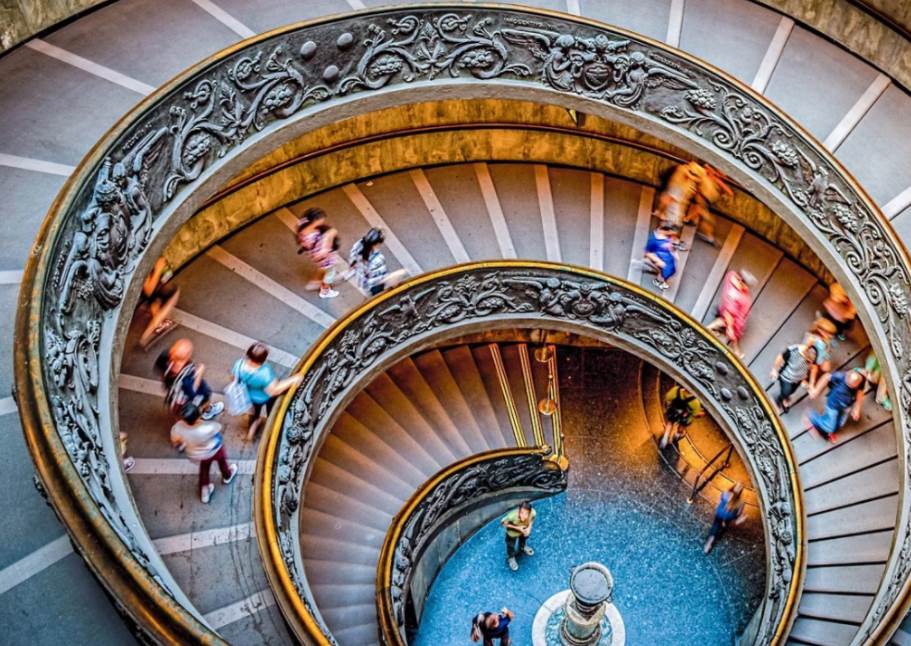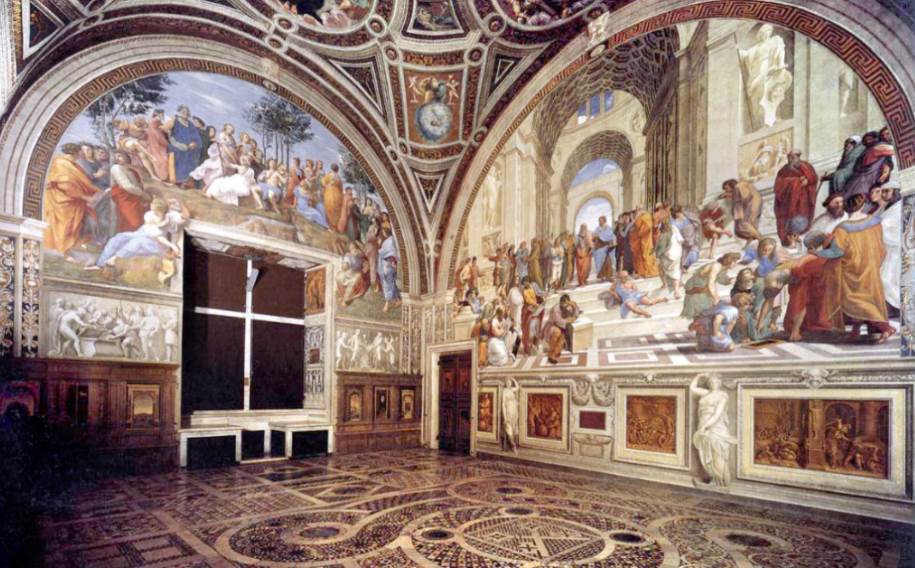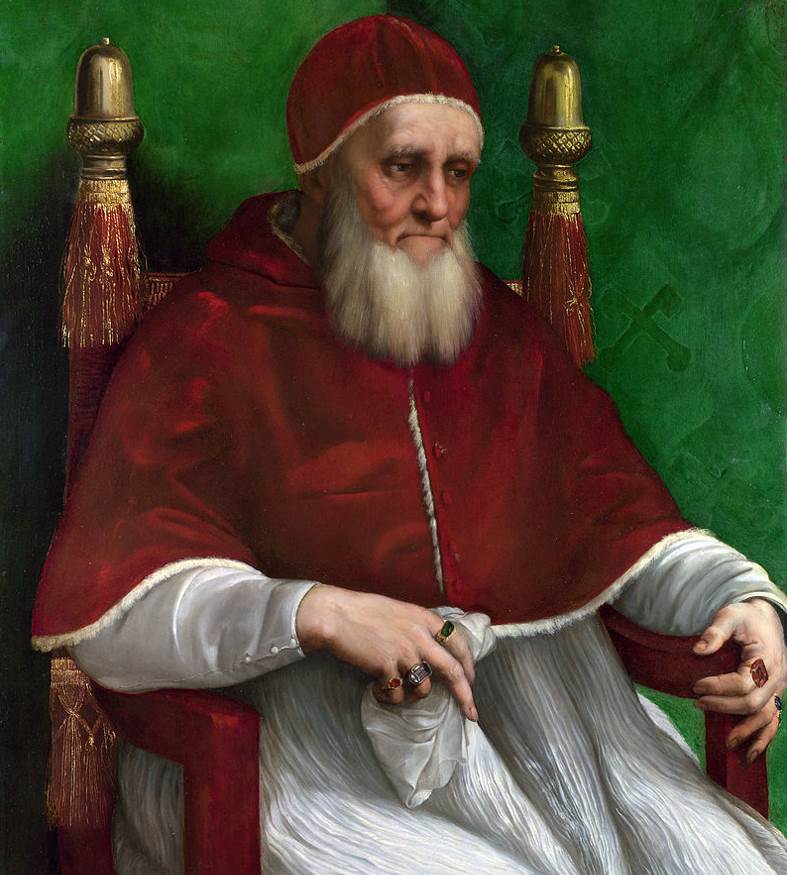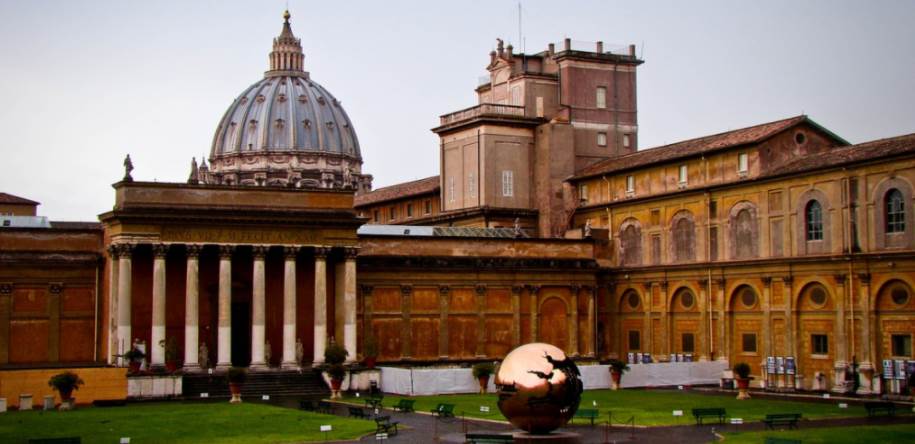Vatican City is the home of the Pope, the head of the Catholic Church.
This City is a sovereign state and with an area of 44 hectares (110 acres) and just 1,000 inhabitants, it’s the smallest in the world.
They do however possess an extremely large art collection that has been amassed by the Popes over the centuries making it one of the most famous sites in Rome.
Similar to the art collection of the Louvre in France, the collection of the Vatican Museums contains artworks of all sorts, ranging from ancient sculptures to paintings of the Renaissance.
Let’s check out some facts about the Vatican Museum so you have a clear picture of one of the biggest and most renowned museums in the world.
1. It started with one sculpture
Every museum has to start somewhere, and so did the Vatican Museum. The Vatican museum started with the purchase of one marble sculpture in 1506.
It was Pope Julius II who made the purchase and effectively started the massive art collection that is now in the possession of the Vatican.
The sculpture, named “Lacoön and His Sons” was put on public display in Vatican City a month after the Pope bought it from a nearby vineyard.

2. The art collection is huge
What started as a regular purchase of a marble sculpture became a massive collection of art.
At the moment, the Vatican Museums possess over 70,000 pieces of art, of which 20,000 are on public display.
The 20,000 pieces of art on public display are located in 54 galleries, referred to as “sale” all around Vatican City.
3. The main attraction is the Sistine Chapel
One of the most famous places in the Vatican Museum is the Sistine Chapel. It is located in the Apostolic Palace which is the official residence of the Pope.
Its most important function today is the Papal Conclave. It’s thebyrocess in which a new Pope is selected.
In terms of art, it’s mostly known for its frescoes on the ceiling by nobody else than Michelangelo, one of the most famous artists of the Renaissance.
Some of the most famous paintings include “The Trials of Moses” by Botticelli, “The Resurrection of Christ” by Hendrik Van Den Broeck, “The Creation of Adam,” and “The Last Judgement” by Michelangelo.

4. A labyrinth of art
If you manage the go through all 54 galleries, You’ll find the Sistine Chapel to be the last on your path.
The Vatican museum ists out of 1,400 rooms, chapels, and galleries. Many of them used to be wings that were part of the Vatican Palace.
Magical stairways, especially the one designed by Bramante (which is a replica of his original staircase), connect this intricate labyrinth of art, leaving you from one surprise to another.

5. The famous Raphael Rooms
Apart from the Sistine Chapel, the Raphael rooms are some of the most popular galleries in the Vatican Museum.
The 4 rooms contain frescoes painted by the famous High Renaissance painter Raphael and his students. Some of the most famous ones are “The School of Athens” and “The Parnassus.”
The rooms were originally intended to be rooms of the apartment of Pope Julius II and used to serve as reception rooms in the Vatican Palace. They are now open to the public as part of the Vatican Museum.
The Raphael rooms are commonly known as the “Stanze.”

More interesting facts about the Vatican Museum
6. If you visit every single room in the Vatican Museum, you would have to walk 9 miles or 14.48 kilometers. The total size of the museum is over 43,000 square meters (460,000+ square feet)!
7. The founder of the Vatican Museum, Pope Julius II (1443-1513), didn’t choose his Papal name referring to Julius I. It refers to Julius Caesar.
8. Pope Julius II was known as the ‘Warrior Pope’ or the ‘Fearsome Pope.’ He became Pope during the Italian Wars, which explains his first nickname. His unpleasant character and bad attitude towards his servants explain the second.

9. The Vatican City doesn’t charge any tax to its inhabitants. The only way it generates revenue is through Vatican Museum entrance fees and the selling of souvenirs.
10. Every last Sunday of the month, the museum is free for every visitor. You do have to either be very early or be willing to wait in line for many hours before you can get access.
11. The Vatican Museum receives over 6 million visitors every year. This makes it the 4th most visited museum in the world.
12. The current director of the Vatican Museum is an Italian woman and art historian named Barbara Jatta. She took over the position in June 2016.
13. The double spiral staircase is one of the most famous attractions of the Vatican Museum. It was commissioned by Pope Pius XI and created by the Italian architect and engineer Giuseppe Momo in 1932.
14. The Bramante Staircase is one of the most photographed spots in the entire museum, and interestingly enough is the first thing to show up when you visit the Museum’s official website.

15. The gallery of maps was created between 1580 and 1583 and contains several maps of Italy drawn by Italian geographer Ignazio Danti. It took 3 years to create the 40 panels that decorate the 120 meters (393 ft) long gallery.
16. In 2006, the Vatican Museum celebrated its 500th anniversary. It did so by permanently opening up the Vatican necropolis to the public.
17. The Vatican Necropolis, which is now part of the Vatican Museum, is located directly uneath the Vatican City. The depth below the Saint Peter’s Basilica varies from 5 to 12 meters (16-39 ft).
18. One of the exits with notable sculptures on top used to be one of the main entrances of the Vatican Museums.

19. Michelangelo reluctantly accepted the job to paint the frescoes on top of the Sistine Chapel ceiling. The fact that he considered himself to be a sculptor and also the fact that he had never done any frescoes before almost made him refuse the offer from Pope Julius II. Luckily he got enough money to finally accept, allowing us to witness this magical creation.
20. The Vatican City, and therefore the Vatican Museum as well, is a UNESCO heritage site. It’s the only UNESCO heritage site that covers an entire country (albeit a very small one).
21. The Vatican Museum art collection contains a lot of paintings. So much that it would take you an entire 4 years to look at all of them for just 1 minute.
22. The Vatican Museum employs over 640 people who work in a total of 40 different departments.



